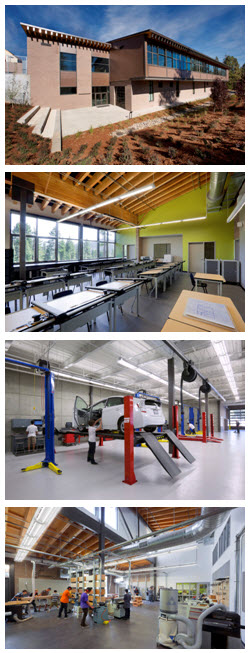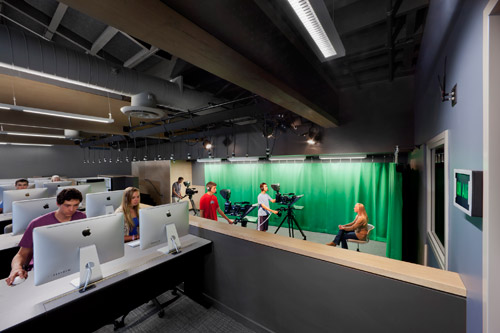Curriculum and California K-12 Schools: Part 2
 In our first post about curriculum and construction in K-12 schools, we highlighted the idea that this pairing is really about a thoughtful blend of old and new ideas. Technology, hands on experiences and relevant core values all play a vital role. My last piece was focused on concepts that cross grade and subject boundaries, as with the tessellations—repeated, interlocking shapes that are found in nature, science and math—at Beverly Hills High School (BHHS). Today, we’ll focus more on hands on experiences.
In our first post about curriculum and construction in K-12 schools, we highlighted the idea that this pairing is really about a thoughtful blend of old and new ideas. Technology, hands on experiences and relevant core values all play a vital role. My last piece was focused on concepts that cross grade and subject boundaries, as with the tessellations—repeated, interlocking shapes that are found in nature, science and math—at Beverly Hills High School (BHHS). Today, we’ll focus more on hands on experiences.
Our clients at South Tahoe High School (STHS), in South Lake Tahoe, Calif., have mastered this idea, with designs that inspire collaboration and support a different style of learning. Students are faced with real-world challenges, projects and issues that encourage an interactive level of attention.
The Career Technical Education (CTE) “Green” Construction and Transportation Academy is all about hands on learning. The academy exposes students to careers in green construction, auto mechanics and technology, through labs and spaces dedicated to construction technologies, CAD drafting, and graphic design, along with a 10-bay auto shop modeled after a commercial auto dealership. Here, students learn green automotive and transportation technologies including how to work on and repair hybrid vehicles.
As with the Science and Technology Center at BHHS, the CTE Green Construction and Transportation Academy houses multiple subjects under one roof.
“The architecture students might design a building while working with the construction students, and then take it to the arts department for a model or water color rendering,” says Ivone Larson, Principal of South Tahoe High School. “They learn how to collaborate on projects, in real time—from vehicles, to building designs, to oil changes and green fuel management.”
The process benefits students of any career or educational path. For those who will graduate from high school and immediately enter the work force, they’ve gained hands on training and relevant work experience. For those who will continue on with their education at junior colleges and/or four-year universities, their skills have been broadened and they’ll tackle their classes with added expertise.
Perhaps receiving the most interest at the moment is the Tahoe Arts and Design Academy (TADA), also at STHS. This facility takes real-world learning to a whole new level. Described as a “mini Pixar Studio,” the academy features a 275-seat theater, Foley sound stage, tiered orchestra room, green screen studio and state-of-the-art editing suites. The mix of curriculum and spaces dedicated to these arts provide a most exciting, hands-on experience for budding filmographers, actors,  and technical stage and television production staff, among others.
and technical stage and television production staff, among others.
As part of the opening research and planning for the facility, the building team toured several studios in Los Angeles, which ultimately helped guide the task of making the space as high-tech and professional as possible. For example, the split-level TV studio incorporates a filming area and computer bay. “As they’re filming, one half of the class can be on the lower level filming, and the other half editing feed from yesterday’s activities on the upper level,” said Interior Designer Kate Mraw.
Design decisions were made to expose students to skills that would set them apart from other beginners entering the industry. The spaces within the TADA are designed to exceed industry standards and prepare students for careers or further education in these fields.
In Wendy’s next post, she’ll delve into relevant core values—and why they’re important in regards to meaningful curriculum. A Design Principal at LPA Inc., Rogers works tirelessly to promote the adoption and execution of green schools in California. Her specialty is the integration of design and curriculum within educational spaces. To download a complimentary chapter out of her Green Schools Primer, use this link: Lessons in Sustainability.